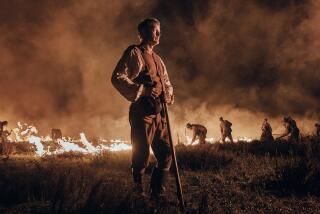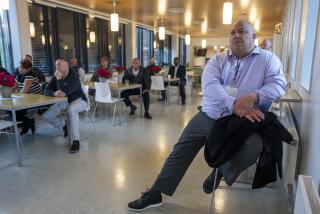The Royal Tour of Danish Castles and Manors
COPENHAGEN — “The number of ships increases, the endless flood of Vikings from Denmark never ceases to grow. Everywhere Christ’s people are the victims of massacre, burnings and plunder.”
Thus wrote the French monk Ermentarius in the face of a Viking onslaught in AD 835. But today most people view the Danes more benignly.
Contrary to the brooding Hamlet image, the Danes are relaxed and easygoing. In the capital of Copenhagen, the buildings show a whimsical architectural diversity and some along the canals sport bright colors. On top of the old stock exchange stands a spire made of three crocodiles with their tails pointed toward the firmament and their front claws grasping the roof.
In Copenhagen, my wife and I rented a car to explore in the rest of the country. The countryside springs right out of a Hans Christian Andersen tale; open fields are interrupted occasionally by forests. Swans, the national bird, seem particularly at home in castle moats. The Danes built their moats not for defense but for appearance.
As Denmark is distinguished largely by its architectural heritage, we concentrated on searching out castles and manors. We visited more than 20 manors and castles on eight islands. Bridges connected most islands, ferries serviced others.
Driving down the single-lane, asphalt road along the south coast on the island of Funen, we almost missed the inconspicuous turnoff for Steensgaard Manor. A dirt road, lined by enormous poplars, cut through a couple of rows of tall holly hedges. Across a rock-paved outer courtyard and over a moat, we drove into the cobblestoned inner courtyard, enclosed on three sides by the manor house with its red-tile roof.
Dating from the late 1200s, the first floor of the main section has several rough, uneven columns of rock protruding through the bricks. The second floor and wings were added over the centuries. Several stone steps led up to a massive oak door.
On either side of the door stood sandstone pillars carved with human figures supporting a large dripstone. The dripstone showed a pair of recumbent women, and a second lintel, resting on their heads, held a pair of lions clawing at the family crest.
Large Staircase
In response to our clunk with the iron knocker, a woman opened the enormous door. In front of us in the foyer, a large staircase with a heavy wooden balustrade clung to two walls as it climbed to the second floor. Gray and white marble tiles made the floor.
The manor might well have been a meticulously constructed set for an Agatha Christie movie. Polished oak wainscoting reached three-quarters of the way up the walls. A fireplace sat on the south side of this entry room, and opposite it in the corner by the stairs stood a suit of armor.
Swords and ancient rifles hung on the white walls, while three carved-wood, crimson-upholstered chairs were placed around the room. A seven-foot-long reproduction of Rembrandt’s “Textile Merchants” hung over the stairs. A balcony encircled the room on the second floor and up there, antlers and other trophies were stuck to the walls. A gold chandelier lit the room.
Amid oak paneling and fresh flowers on each table, we dined fabulously and sipped a delicate red Bordeaux privately labeled for the manor. The menu was typed in the language spoken at each table.
A salmon mousse was followed by roast duck. The chef had shot the duck that day on the estate; we carefully removed pieces of buckshot. For dessert the waitress brought ice cream crepes. After dinner we retired to an elegantly furnished room for coffee.
Our room for two, including breakfast and dinner, cost $81 (off-season price), a bargain.
West across Funen and over the bridge spanning the Tragten Gap we came to the city of Ribe on Jutland, the part of Denmark on mainland Europe. Ribe is the country’s anchor to history. It’s a charming medieval town with gnarled, gingerbread-like houses, bending and slumping with the weight of the years.
By AD 800 Ribe was firmly established as a Viking trading center. In the Middle Ages it rated as Denmark’s most important town, with sea links to distant lands. The cathedral and the tower of Riberhus Royal Palace served as landmarks for sailors. Ribe never industrialized, so this village of 8,000 inhabitants remains roughly unchanged from 700 years ago.
We checked into the Weis Stue, a 700-year-old inn with only nine beds. The Weis Stue might well be a creation out of “Alice in Wonderland.” From the street you walk down a short passage with dining areas on either side. Then a door opens into a small pub with a few patrons tightly wedged in.
The second floor was fit for trolls. With the ceiling less than six feet high, the rafters crossing it every three feet forced us to duck. Five little green-with-red-trim doors opened to the rooms.
Our room resembled a shoe box, narrow and rectangular. Two single beds pressed against the wall. Two sets of windows looked out over the street. A pitcher and washbasin--no running water--sat on a small table. We felt like travelers of centuries past, happy to have found a comfortable room at the inn, and it was only $15 for two.
Ribe is ideal for exploring on foot. In three places, because the river has temporarily divided, little streams rush under bridges on the main street, and most of the townspeople get around on bikes.
From Ribe we headed north to the Djursland Peninsula on the east coast of Jutland, where a wealth of Renaissance manors are scattered. We spent one night at Sostrup Slot, a beautiful three-winged Renaissance castle dating to the 1500s on the sparsely settled, wild north coast. The nuns of the Order of St. Bernard operate Sostrup as both a retreat and a pension (a modest hotel).
With expectations of a novel evening, we puttered across the three stone arches bridging the moat, through the gate with the cross stone held up by sandstone pillars of carved figures, and into the stone-paved courtyard. After the portly mother superior checked us in, one of the village girls led us to our room. Its furniture had the reassuring character of well-used antiques. The whole visit, including breakfast and a modest dinner, cost us only $40, with the experience alone worth it.
Denmark’s most spectacular Renaissance castle, Frederiksborg, lies just 20 miles north of Copenhagen on the island of Zealand. King Christian IV built the castle from 1600 to 1621 and named it after his father, Frederik II.
Built on three islands in a large pond, the castle amazes visitors with its gates, towers, courtyards and distinctive Neptune fountain with 16 bronzed figures. But only two other kings--Christian’s son Frederik IV and grandson Christian V--lived in it. They used Frederiksborg as a hunting castle and to impress foreign royalty until it fell out of architectural vogue at the beginning of the 18th Century.
For the next century, Danish kings visited the old residence only intermittently. Then in a celebration after a day of hunting in the fall of 1859, a fire destroyed most of the castle.
Frederiksborg was eventually rebuilt in 1920 with funds from brewing baron J. C. Jacobsen, owner of Carlsberg breweries. Now it is a museum holding antiques and hundreds of paintings depicting Denmark’s history.
For information and help in planning a trip to Denmark, contact the Danish Tourist Board at 655 3rd Ave., New York 10017, phone (212) 949-2333.
More to Read
Sign up for The Wild
We’ll help you find the best places to hike, bike and run, as well as the perfect silent spots for meditation and yoga.
You may occasionally receive promotional content from the Los Angeles Times.






